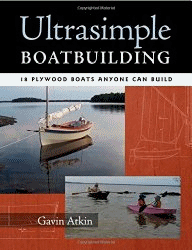Sabado, Hunyo 23, 2012
Mast Raising for Trailer-Sailers
 Trailer-sailers are great boats for those who don't want a bigger boat or don't have the funds needed to own a bigger boat and keep it on a permanent mooring or marina. They can be taken home or to a storage facility when not being used, to reduce ownership cost. Their size allows them to be used as a short-term cruiser for a small family, for weekend or holiday cruises of a week or two. They are also capable of getting you into all sorts of nooks and beautiful little spots that are inaccessible to larger boats. This can be great to get away from the crowds in some locations or for just getting you right up to the beach, to almost step ashore onto dry sand.
Trailer-sailers are great boats for those who don't want a bigger boat or don't have the funds needed to own a bigger boat and keep it on a permanent mooring or marina. They can be taken home or to a storage facility when not being used, to reduce ownership cost. Their size allows them to be used as a short-term cruiser for a small family, for weekend or holiday cruises of a week or two. They are also capable of getting you into all sorts of nooks and beautiful little spots that are inaccessible to larger boats. This can be great to get away from the crowds in some locations or for just getting you right up to the beach, to almost step ashore onto dry sand.Cape Cutter 19 "Zest" tucked into a small spot that
is out of reach to bigger boats.
Cape Cutter 19 "Kaliope" taking a party break from
the tough duty of cruising the Greek Islands.
Launch and retrieval, with their associated activities of preparing the boat and raising or lowering the mast, are relatively simple when there are enough hands to help with doing the actual muscle work and ensuring that rigging wires, halliards etc are not hooking around the trailer, rudder or other obstacles. It is when this is all being done by one person that it can become rather challenging and it becomes very necessary to have your boat well prepared for the operation.
There are various ways to do this with hinged mast steps or tabernacles in combination with spinnaker poles, folding bowsprits and bipods, with varying degrees of effectiveness. The biggest problem is normally ensuring that there is decent lateral support for the mast as it goes up, to stop it from going off centreline and damaging something.
The bigger the boat and the taller the rig, the more important it becomes to have a well thought-out system to raise and lower the mast without a host of people to help. Another factor is how far out of alignment the mast hinge position is from the chainplates. The Cape Cutter 19s shown above have a short mast, folding bowsprit and tabernacle on a flush deck, so it is fairly easy as long as the many ropes and wires don't hook on anything. The Didi 26 shown below has a hinged mast step (less stable than a tabernacle) and taller mast stepped on top of a high cabin, so it will not be easy to do it by yourself without a decent system.
Didi 26 "Butterfly" tied to a tree in the Swedish
Baltic Islands.
A few days ago I read an article about a system that seems to have sorted out all of the normal problems. The best solutions are normally developed out of necessity, which is the case here. The owner of the boat has a mooring that is up-stream from a low bridge, which means raising his mast after passing under the bridge every time he wants to sail and lowering it before the bridge when returning to moorings.
My thanks the staff at Tropical Boating for taking the trouble to write a clearly illustrated article about a solo mast raising/lowering system that can be adapted to most trailer-sailers.
See out full range of designs at http://dixdesign.com/ .
Mag-subscribe sa:
I-post ang Mga Komento (Atom)



Walang komento:
Mag-post ng isang Komento